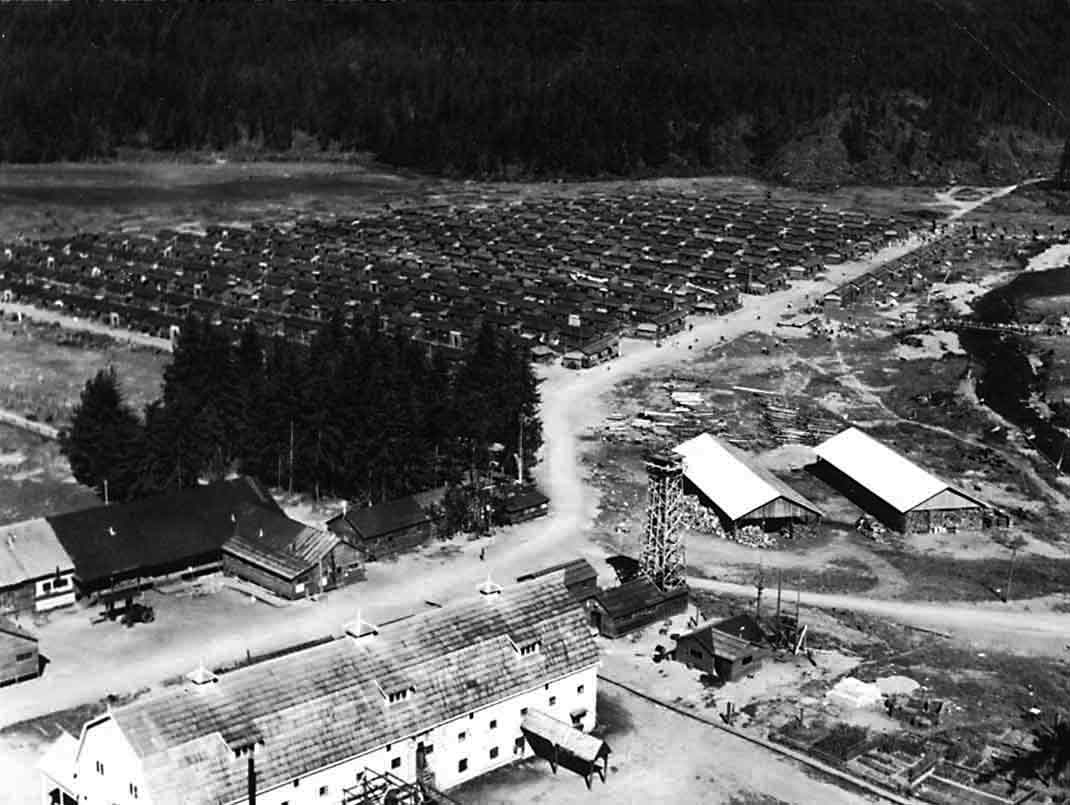The Charter of Rights and Freedoms and the Treatment of Japanese Canadians
Objectives:
- Students demonstrate an understanding of equality and fairness in Canada with respect to the Canadian Charter of Rights and Freedoms. Students learn how the Canadian Charter of Rights and Freedoms might have protected Japanese Canadians from the treatment they received in the 1940s.*
- Students find evidence to back up their opinions using a variety of primary and secondary sources.
- Students will also learn about some of the challenges that Japanese Canadians faced.
Time: 40-60 minutes
Materials and Resources:
- copies of the Canadian Charter of Rights and Freedoms (optional)
- copies of the student page chart: “The Charter of Rights and Freedoms and the Treatment of Japanese Canadians”
The War Measures Act
- Registration cards – everyone of Japanese ancestry over 16 years of age must be fingerprinted and photographed and carry an identity card to be shown on demand.
- Notice – Feb. 1942 – “To all persons of Japanese racial origin” – curfew from sunset to sunrise; confiscation of motor vehicle, camera, radio, firearm, ammunition or explosive; RCMP is authorized to search without warrant; every person of the Japanese race shall leave the protected area; regardless of place of birth.
- Travel Permit – Japanese Canadians could not leave an area without reporting to the RCMP and obtaining a travel permit.
Newspaper photos – “They Walked Home” – confiscation of cars, trucks, motorcycle. - Important Notice – baggage and food allowance
- Poster in Kelowna
Hastings Park
- Photos of the women’s dormitory, the livestock barn, and the men’s, the forum. Hastings Park was the clearing station from where they were shipped out to internment camps in the interior of BC.
- Photo of mattresses being stuffed with straw.
First Person Accounts
- Harry Yonekura about the seizure of fishing vessels belonging to Japanese Canadians; the town of Steveston in 1941/42; and his arrest and imprisonment in Angler, a Prisoner of war camp for not having the proper papers.
- Mits Sumiya, a student at the University of British Columbia in 1941, and his arrest and imprisonment in Angler for refusing to be evacuated.
- Photo of Angler, POW camp – Funeral of an inmate. All prisoners wore a uniform with a red circle on their back so that they are easily spotted.
Repatriation
- Notice – March 12, 1945 – to go east of the Rockies or be repatriated to Japan. “Repatriation” for many means exile to a country they have never seen before.
- Memorandum for the Prime Minister C19452 alerting him to the large number of letters being received protesting the deportation policy. On Jan. 24, 1947 deportation orders are cancelled but already 4,000 Japanese Canadians had been “repatriated”.
- Newspaper article, “This Jap Who Won B.C. Scholarship”
Redress
- Acknowledgment – government document signed by Prime Minister Brian Mulroney and sent to all Japanese Canadians who qualified for redress.
- Photos of Ottawa Rally
Teaching the Activity:
- Remind students of the Canadian Charter of Rights and Freedoms (from an earlier lesson).
- Tell them that the Charter is designed to protect all of the citizens of Canada, but that it was not adopted by Canada until 1981. Japanese Canadians were not protected by the Charter then, but would be today if this were to happen again.
- Students fill in the chart: “Treatment of Japanese Canadians”
- Students use the documents provided as their evidence. (They could also use the video: Minoru, if it is available).
- Have students go through the Charter and find which Rights Japanese Canadians were not allowed during World War II. Students should give examples that are as specific as possible.
Extensions-Notes:
- Given the amount of documentation that students must go through, in the interest of efficiency, it is recommended that students “jigsaw”. (i.e. Each student or team becomes responsible for one area or one document. They fill in their part and share it with the rest of the group. Once all groups have shared they should be able to complete the entire chart as a group. This way, students do not get overwhelmed by all of the documentation and are only responsible for one section.)
- As an extension, students could write about other (human) rights that were violated, (e.g. education, health care, etc.).
- *Note to teachers: The Charter may have protected Japanese Canadians, however there is a “Notwithstanding Clause” (Section 33 of the War Measures Act) that allows the government to withhold certain rights of citizens in times of war. Teachers may include this clause in their lessons, but it is probably beyond the comprehension of students at this age level, and it could cause unnecessary fear and confusion if introduced. In 1988, the Emergencies Act replaced the War Measures Act. The Emergencies Act does not allow discriminatory emergency actions and includes compensation for victims of government actions.
- All materials are included in Lesson Eight: The Charter of Rights and Freedoms and the Treatment of Japanese Canadians, part of Internment and Redress: The Story of Japanese Canadians, a resource guide for teachers of the intermediate grades.
